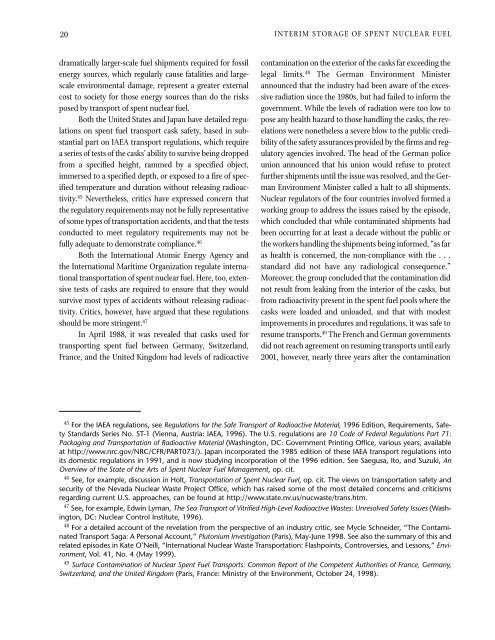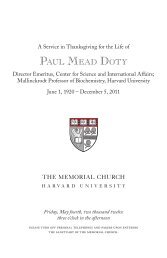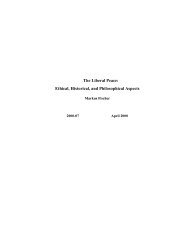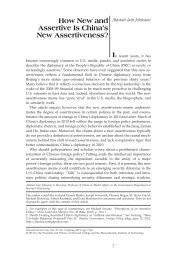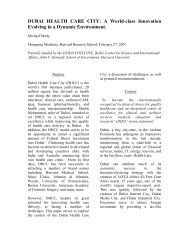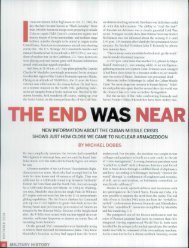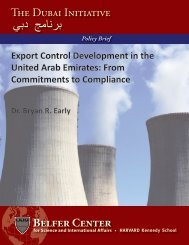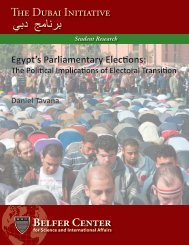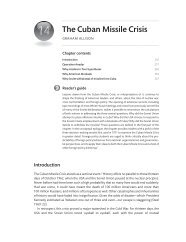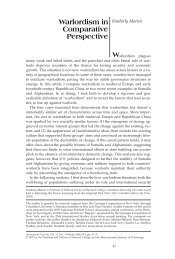Interim Storage of Spent Nuclear Fuel - Woods Hole Research Center
Interim Storage of Spent Nuclear Fuel - Woods Hole Research Center
Interim Storage of Spent Nuclear Fuel - Woods Hole Research Center
You also want an ePaper? Increase the reach of your titles
YUMPU automatically turns print PDFs into web optimized ePapers that Google loves.
20<br />
dramatically larger-scale fuel shipments required for fossil<br />
energy sources, which regularly cause fatalities and largescale<br />
environmental damage, represent a greater external<br />
cost to society for those energy sources than do the risks<br />
posed by transport <strong>of</strong> spent nuclear fuel.<br />
Both the United States and Japan have detailed regulations<br />
on spent fuel transport cask safety, based in substantial<br />
part on IAEA transport regulations, which require<br />
a series <strong>of</strong> tests <strong>of</strong> the casks’ ability to survive being dropped<br />
from a specified height, rammed by a specified object,<br />
immersed to a specified depth, or exposed to a fire <strong>of</strong> specified<br />
temperature and duration without releasing radioactivity.<br />
45 Nevertheless, critics have expressed concern that<br />
the regulatory requirements may not be fully representative<br />
<strong>of</strong> some types <strong>of</strong> transportation accidents, and that the tests<br />
conducted to meet regulatory requirements may not be<br />
fully adequate to demonstrate compliance. 46<br />
Both the International Atomic Energy Agency and<br />
the International Maritime Organization regulate international<br />
transportation <strong>of</strong> spent nuclear fuel. Here, too, extensive<br />
tests <strong>of</strong> casks are required to ensure that they would<br />
survive most types <strong>of</strong> accidents without releasing radioactivity.<br />
Critics, however, have argued that these regulations<br />
should be more stringent. 47<br />
In April 1988, it was revealed that casks used for<br />
transporting spent fuel between Germany, Switzerland,<br />
France, and the United Kingdom had levels <strong>of</strong> radioactive<br />
INTERIM STORAGE OF SPENT NUCLEAR FUEL<br />
contamination on the exterior <strong>of</strong> the casks far exceeding the<br />
legal limits. 48 The German Environment Minister<br />
announced that the industry had been aware <strong>of</strong> the excessive<br />
radiation since the 1980s, but had failed to inform the<br />
government. While the levels <strong>of</strong> radiation were too low to<br />
pose any health hazard to those handling the casks, the revelations<br />
were nonetheless a severe blow to the public credibility<br />
<strong>of</strong> the safety assurances provided by the firms and regulatory<br />
agencies involved. The head <strong>of</strong> the German police<br />
union announced that his union would refuse to protect<br />
further shipments until the issue was resolved, and the German<br />
Environment Minister called a halt to all shipments.<br />
<strong>Nuclear</strong> regulators <strong>of</strong> the four countries involved formed a<br />
working group to address the issues raised by the episode,<br />
which concluded that while contaminated shipments had<br />
been occurring for at least a decade without the public or<br />
the workers handling the shipments being informed, “as far<br />
as health is concerned, the non-compliance with the . . .<br />
standard did not have any radiological consequence.”<br />
Moreover, the group concluded that the contamination did<br />
not result from leaking from the interior <strong>of</strong> the casks, but<br />
from radioactivity present in the spent fuel pools where the<br />
casks were loaded and unloaded, and that with modest<br />
improvements in procedures and regulations, it was safe to<br />
resume transports. 49 The French and German governments<br />
did not reach agreement on resuming transports until early<br />
2001, however, nearly three years after the contamination<br />
45 For the IAEA regulations, see Regulations for the Safe Transport <strong>of</strong> Radioactive Material, 1996 Edition, Requirements, Safety<br />
Standards Series No. ST-1 (Vienna, Austria: IAEA, 1996). The U.S. regulations are 10 Code <strong>of</strong> Federal Regulations Part 71:<br />
Packaging and Transportation <strong>of</strong> Radioactive Material (Washington, DC: Government Printing Office, various years, available<br />
at http://www.nrc.gov/NRC/CFR/PART073/). Japan incorporated the 1985 edition <strong>of</strong> these IAEA transport regulations into<br />
its domestic regulations in 1991, and is now studying incorporation <strong>of</strong> the 1996 edition. See Saegusa, Ito, and Suzuki, An<br />
Overview <strong>of</strong> the State <strong>of</strong> the Arts <strong>of</strong> <strong>Spent</strong> <strong>Nuclear</strong> <strong>Fuel</strong> Management, op. cit.<br />
46 See, for example, discussion in Holt, Transportation <strong>of</strong> <strong>Spent</strong> <strong>Nuclear</strong> <strong>Fuel</strong>, op. cit. The views on transportation safety and<br />
security <strong>of</strong> the Nevada <strong>Nuclear</strong> Waste Project Office, which has raised some <strong>of</strong> the most detailed concerns and criticisms<br />
regarding current U.S. approaches, can be found at http://www.state.nv.us/nucwaste/trans.htm.<br />
47 See, for example, Edwin Lyman, The Sea Transport <strong>of</strong> Vitrified High-Level Radioactive Wastes: Unresolved Safety Issues (Washington,<br />
DC: <strong>Nuclear</strong> Control Institute, 1996).<br />
48 For a detailed account <strong>of</strong> the revelation from the perspective <strong>of</strong> an industry critic, see Mycle Schneider, “The Contaminated<br />
Transport Saga: A Personal Account,” Plutonium Investigation (Paris), May-June 1998. See also the summary <strong>of</strong> this and<br />
related episodes in Kate O’Neill, “International <strong>Nuclear</strong> Waste Transportation: Flashpoints, Controversies, and Lessons,” Environment,<br />
Vol. 41, No. 4 (May 1999).<br />
49 Surface Contamination <strong>of</strong> <strong>Nuclear</strong> <strong>Spent</strong> <strong>Fuel</strong> Transports: Common Report <strong>of</strong> the Competent Authorities <strong>of</strong> France, Germany,<br />
Switzerland, and the United Kingdom (Paris, France: Ministry <strong>of</strong> the Environment, October 24, 1998).


